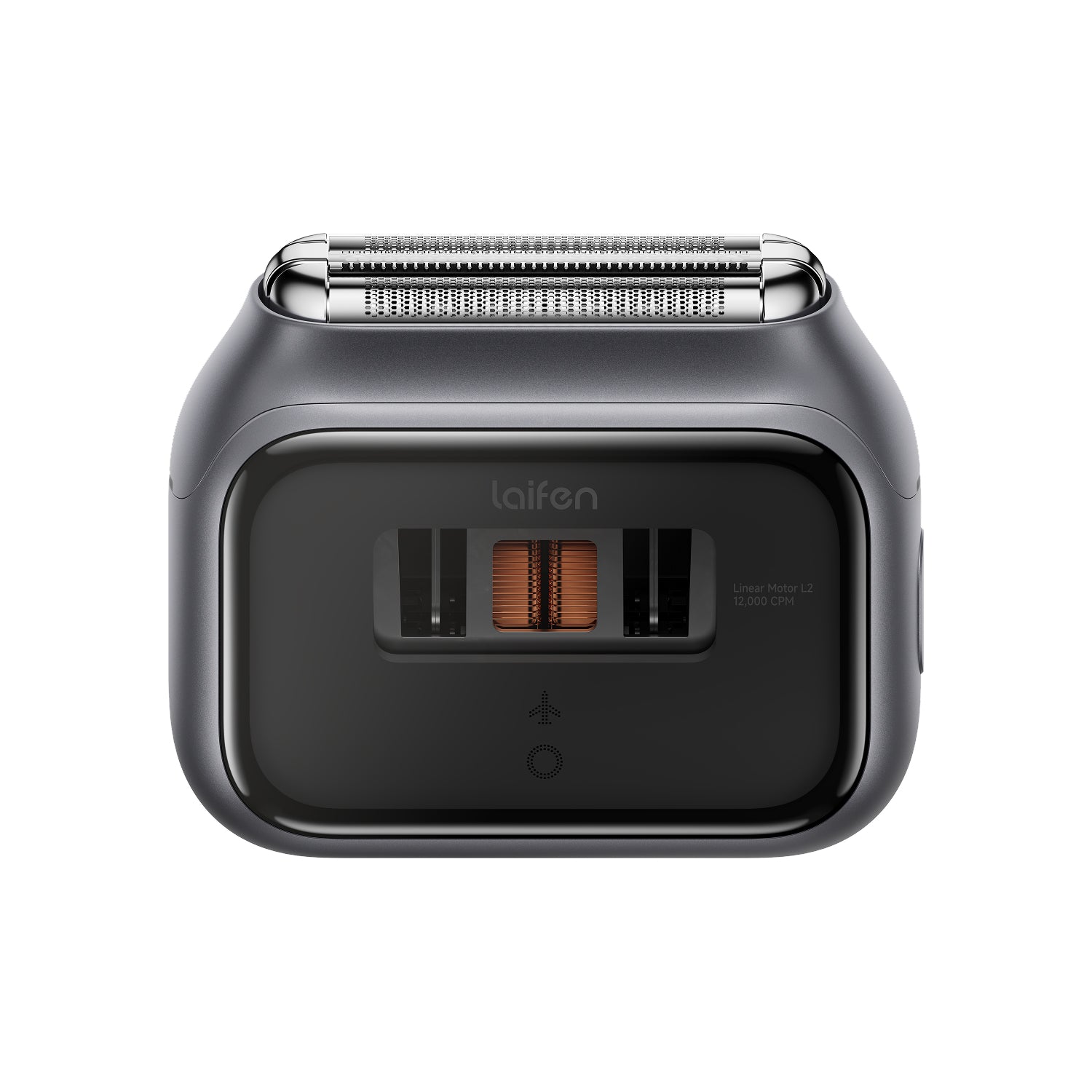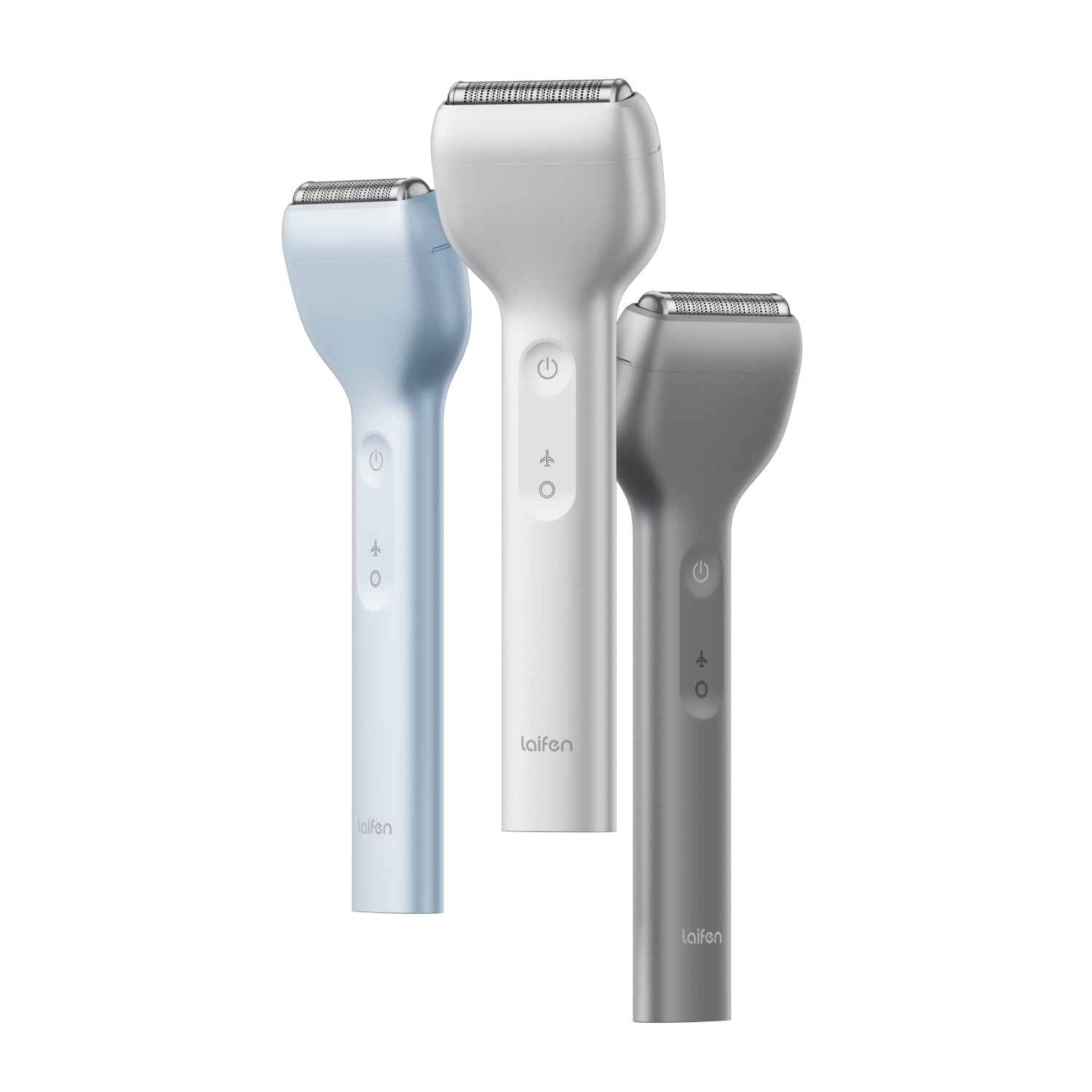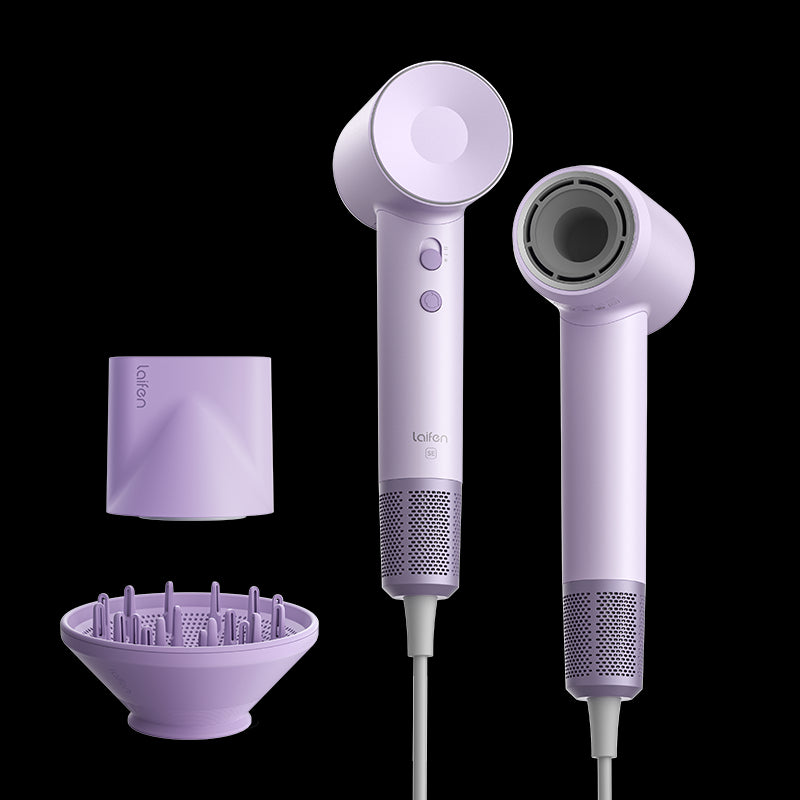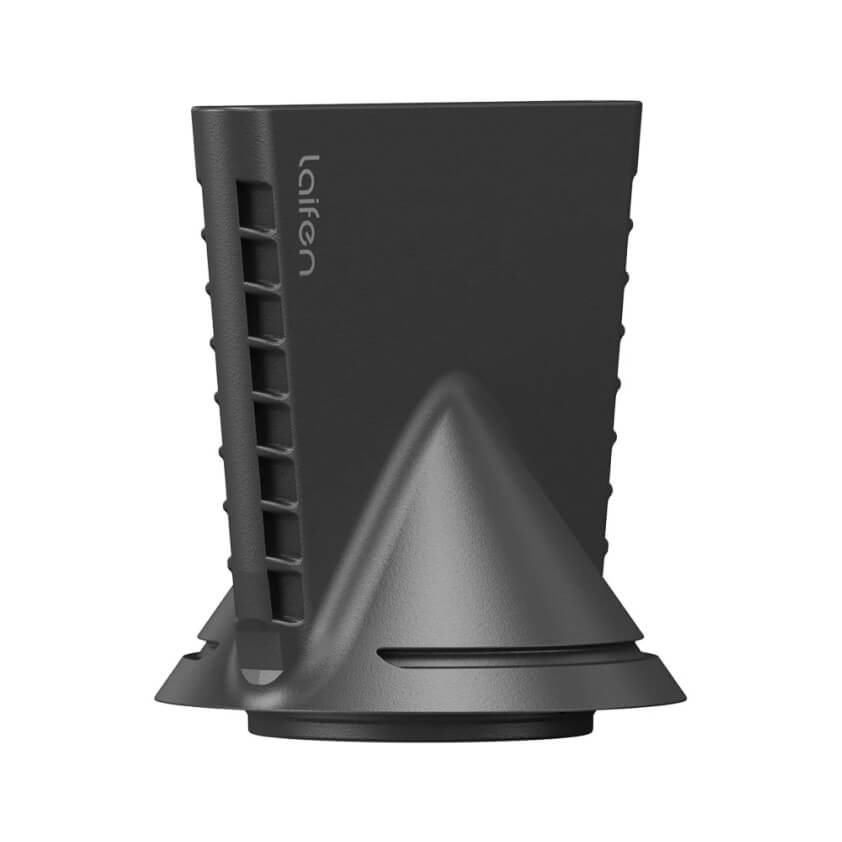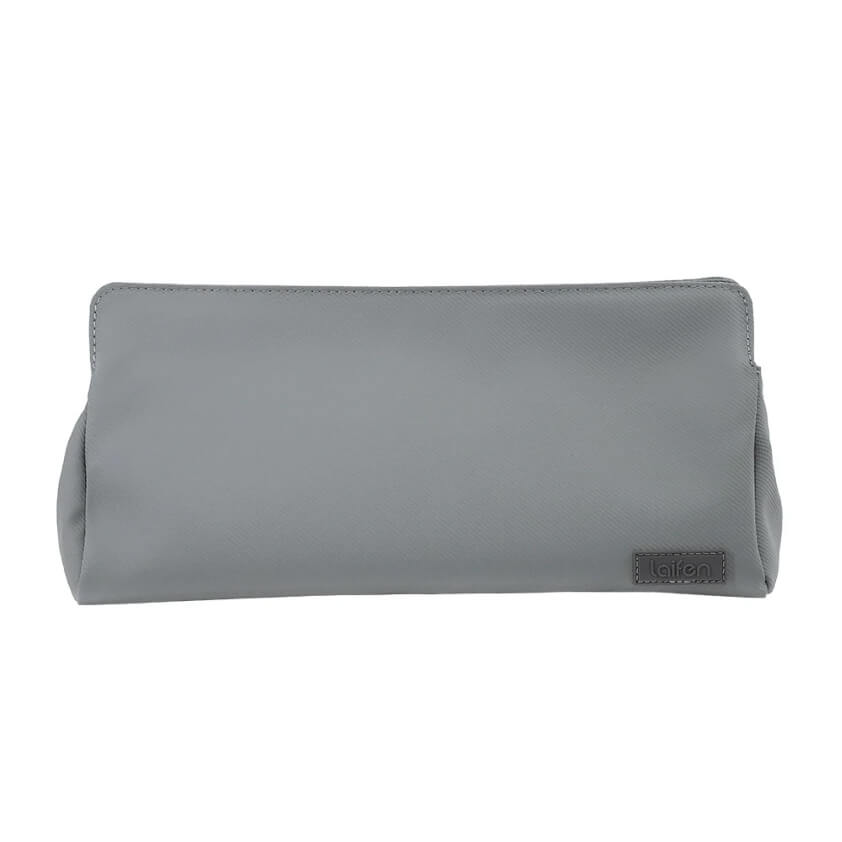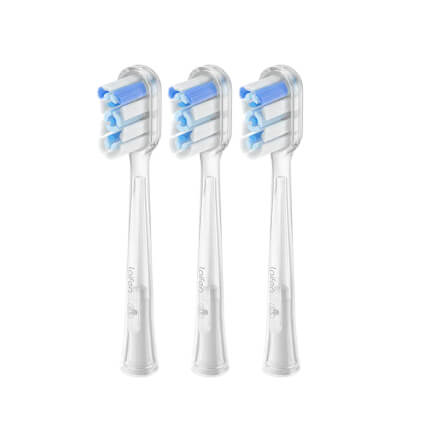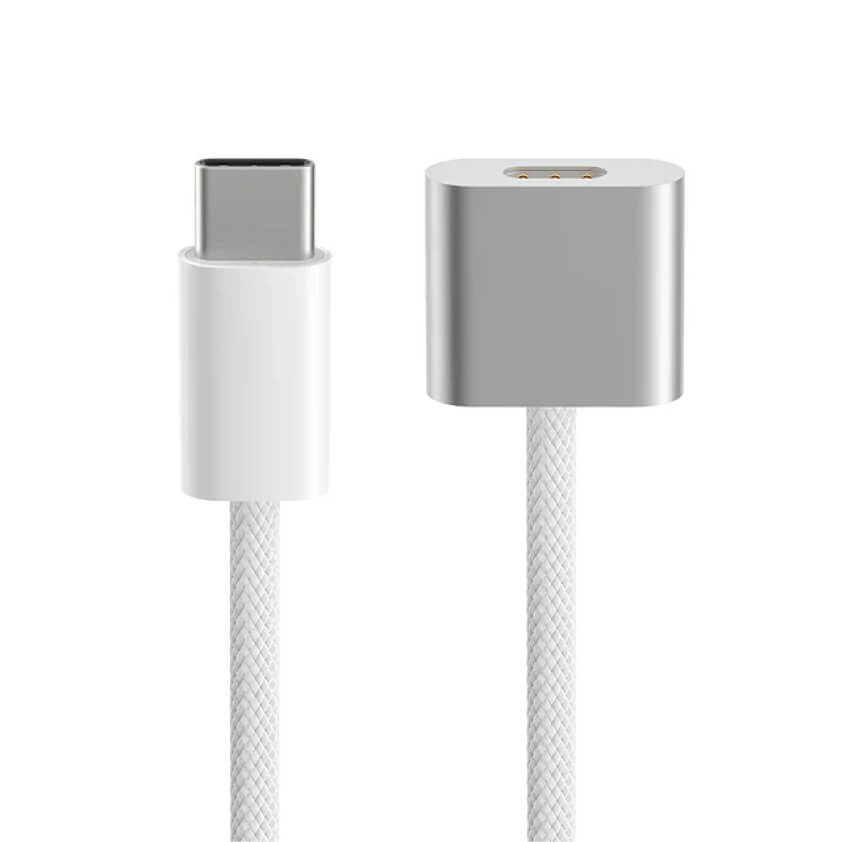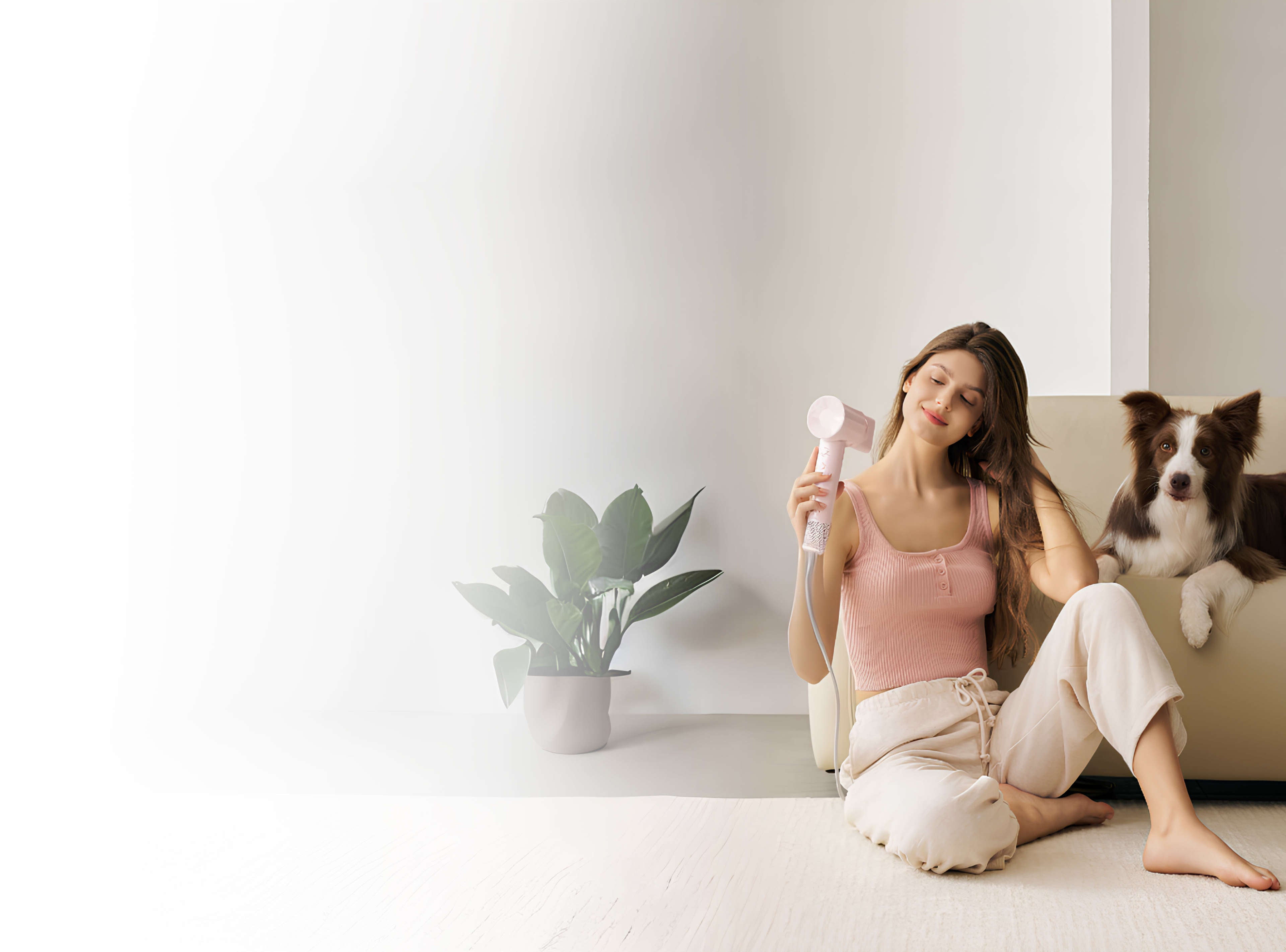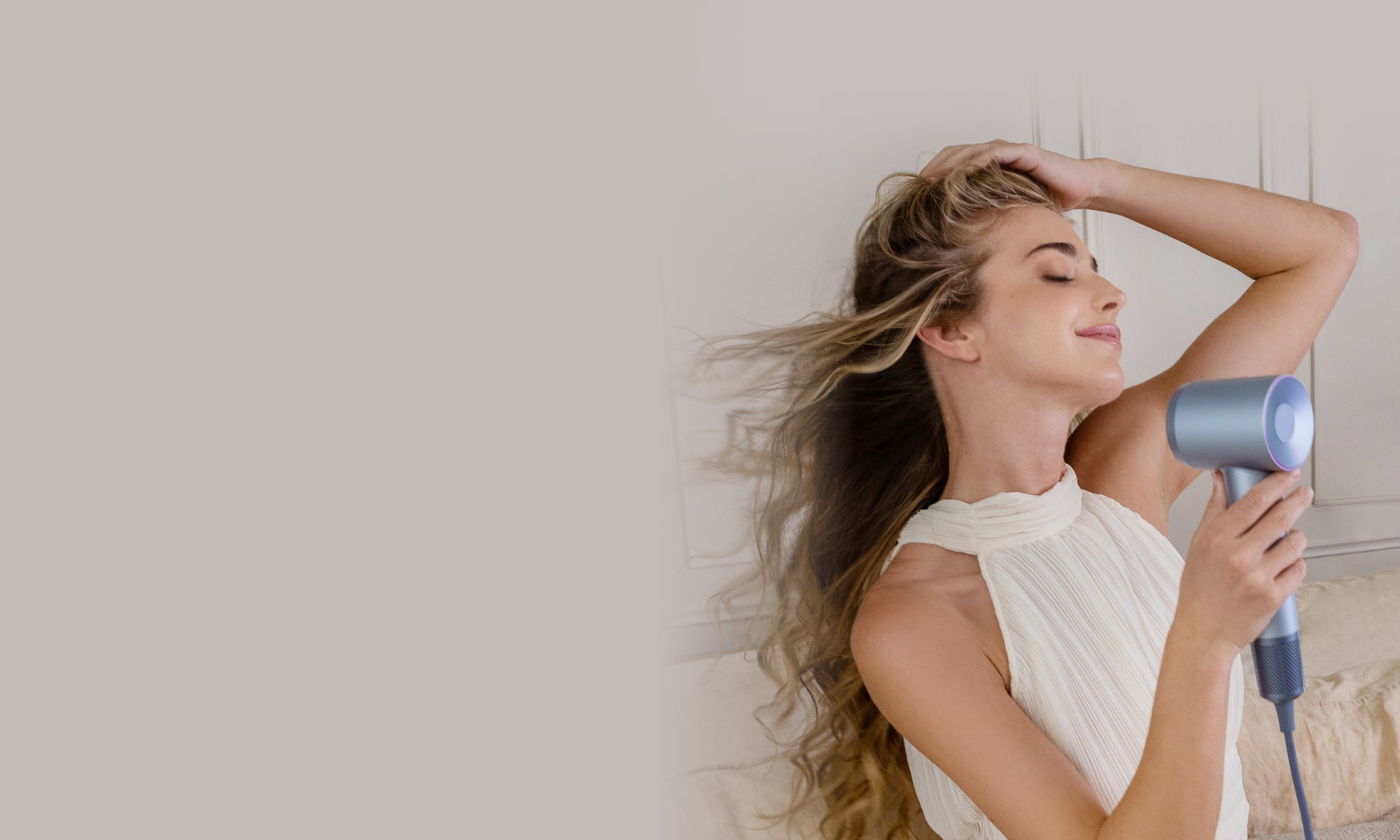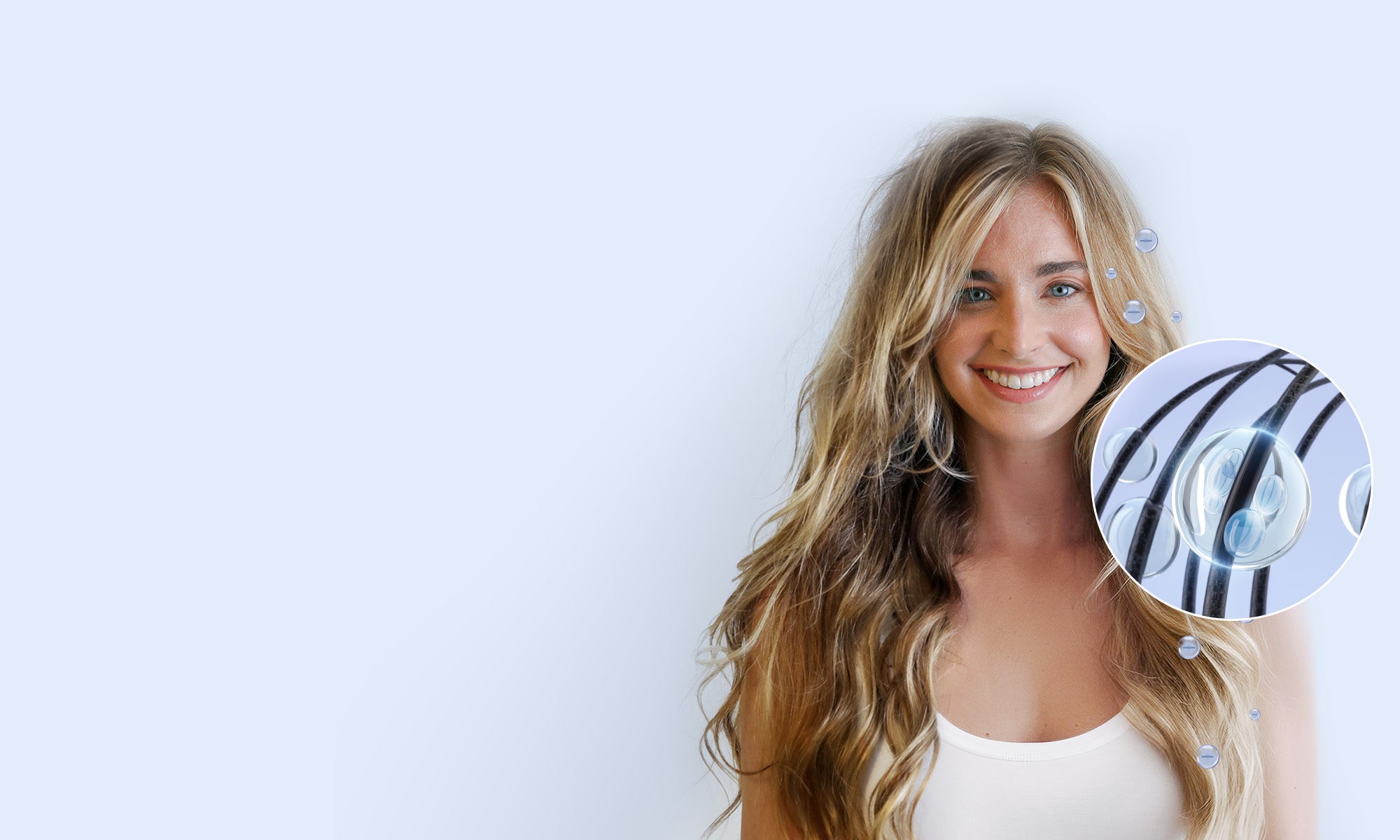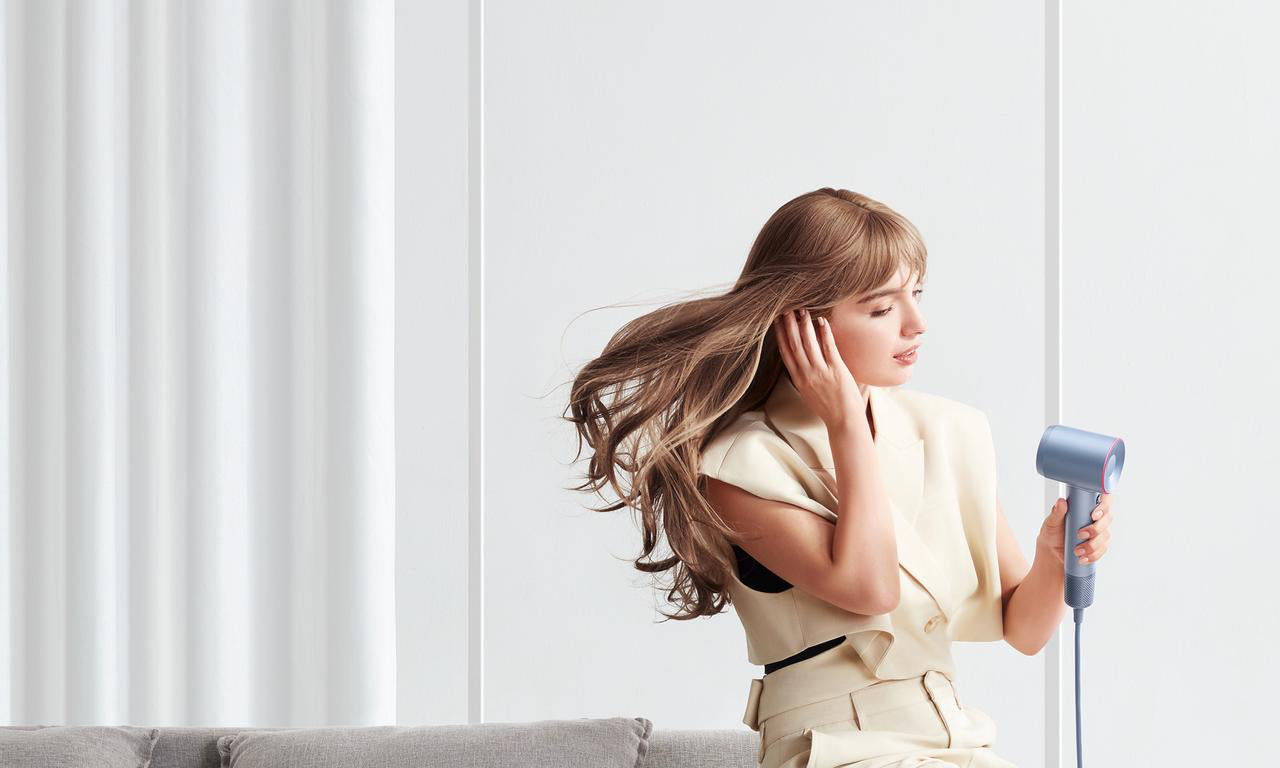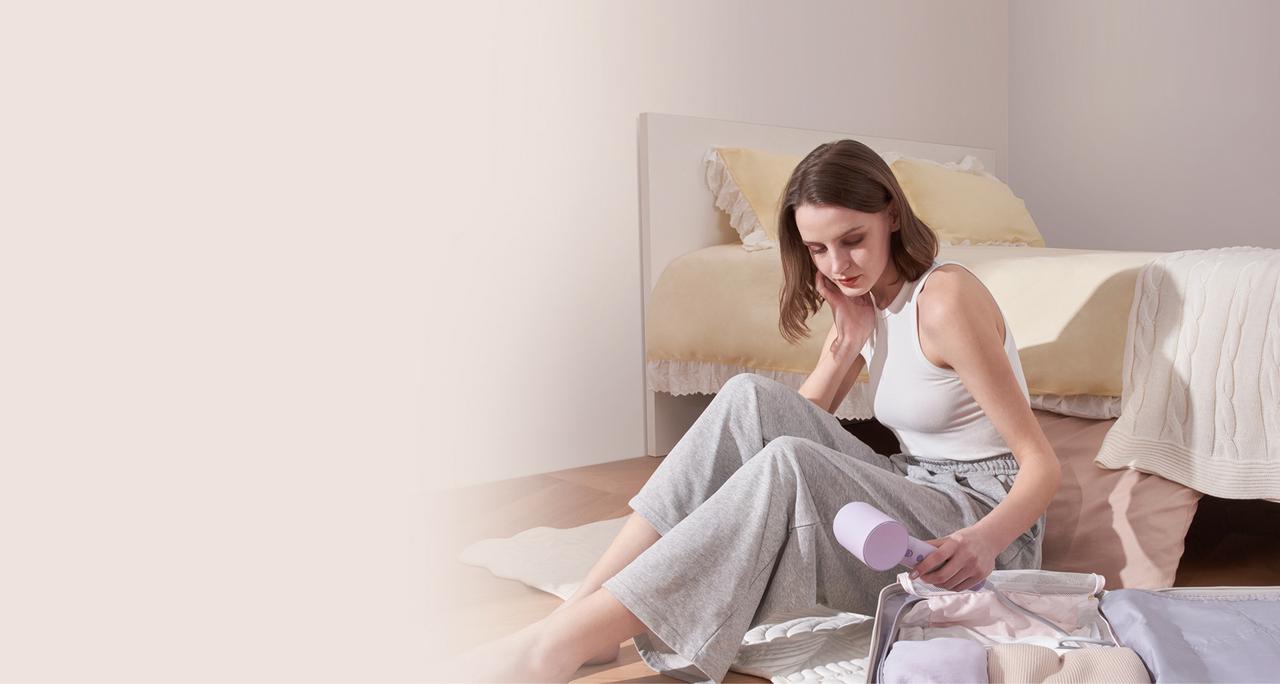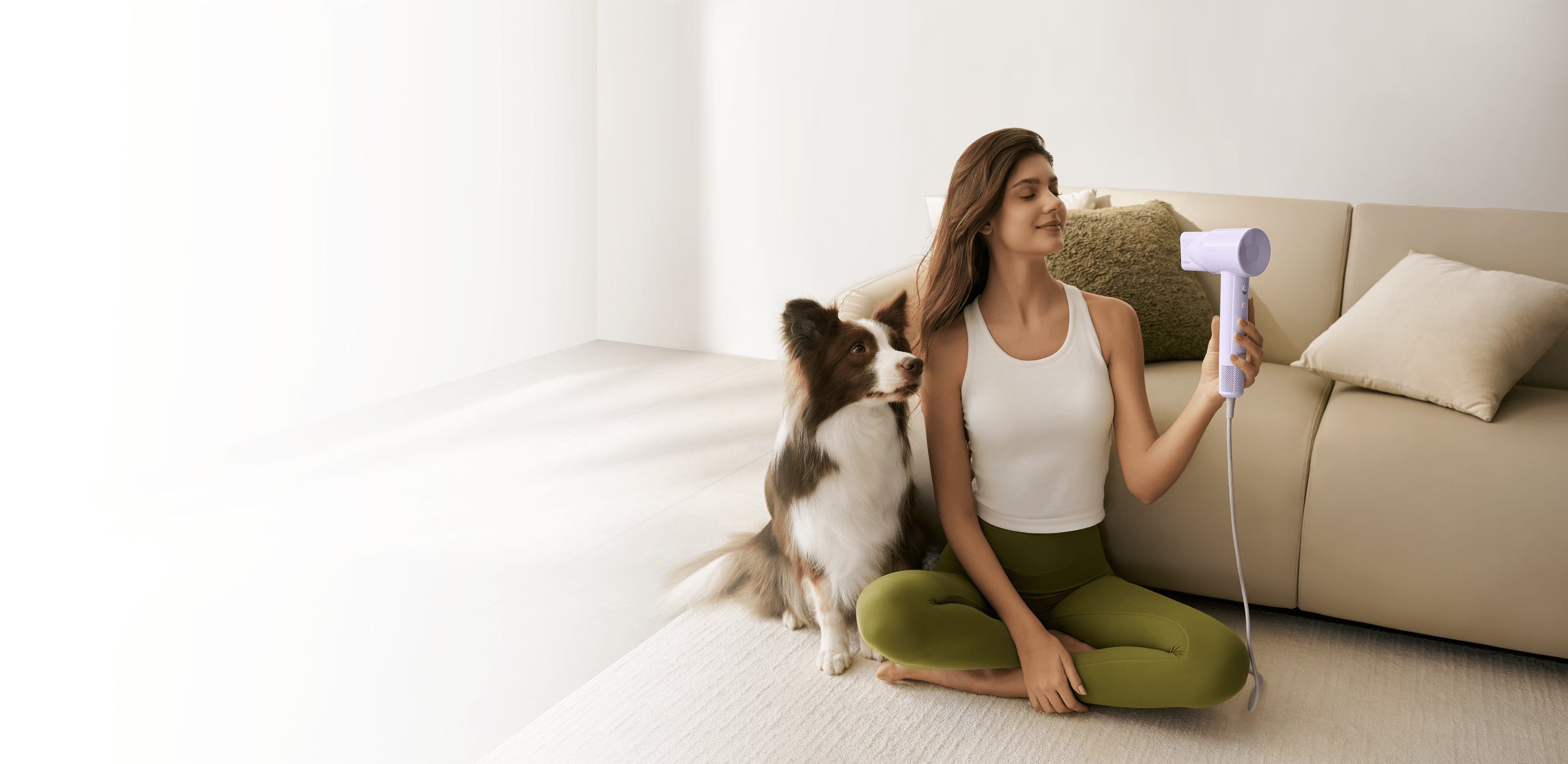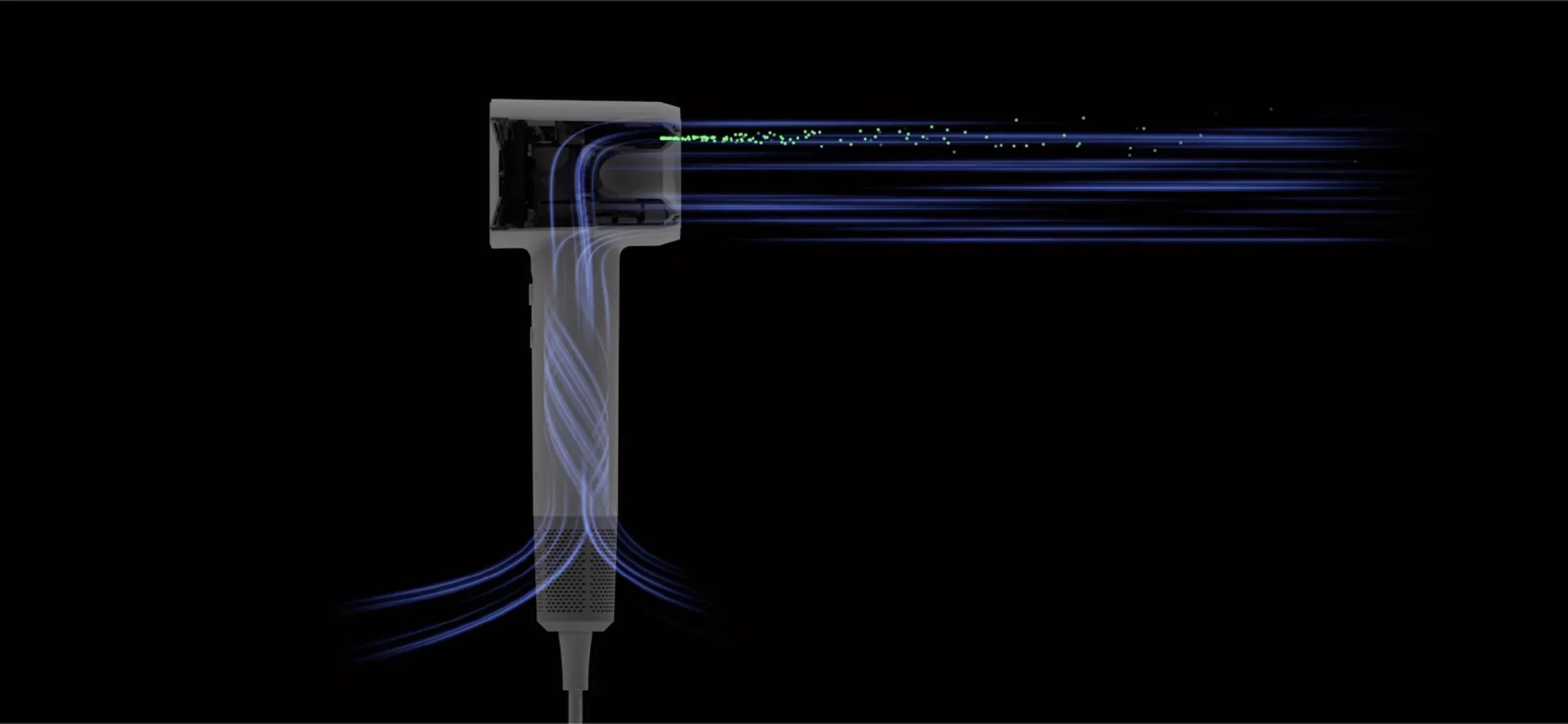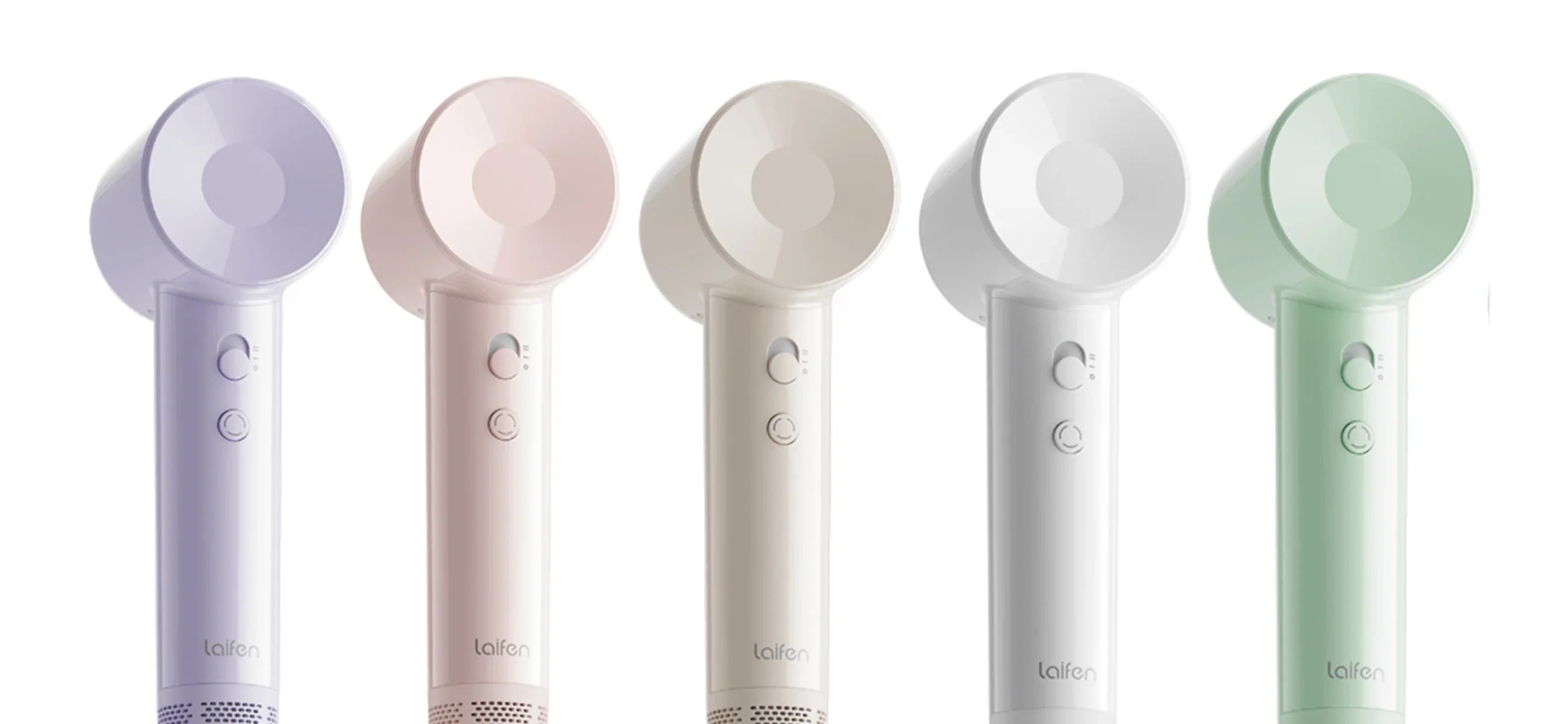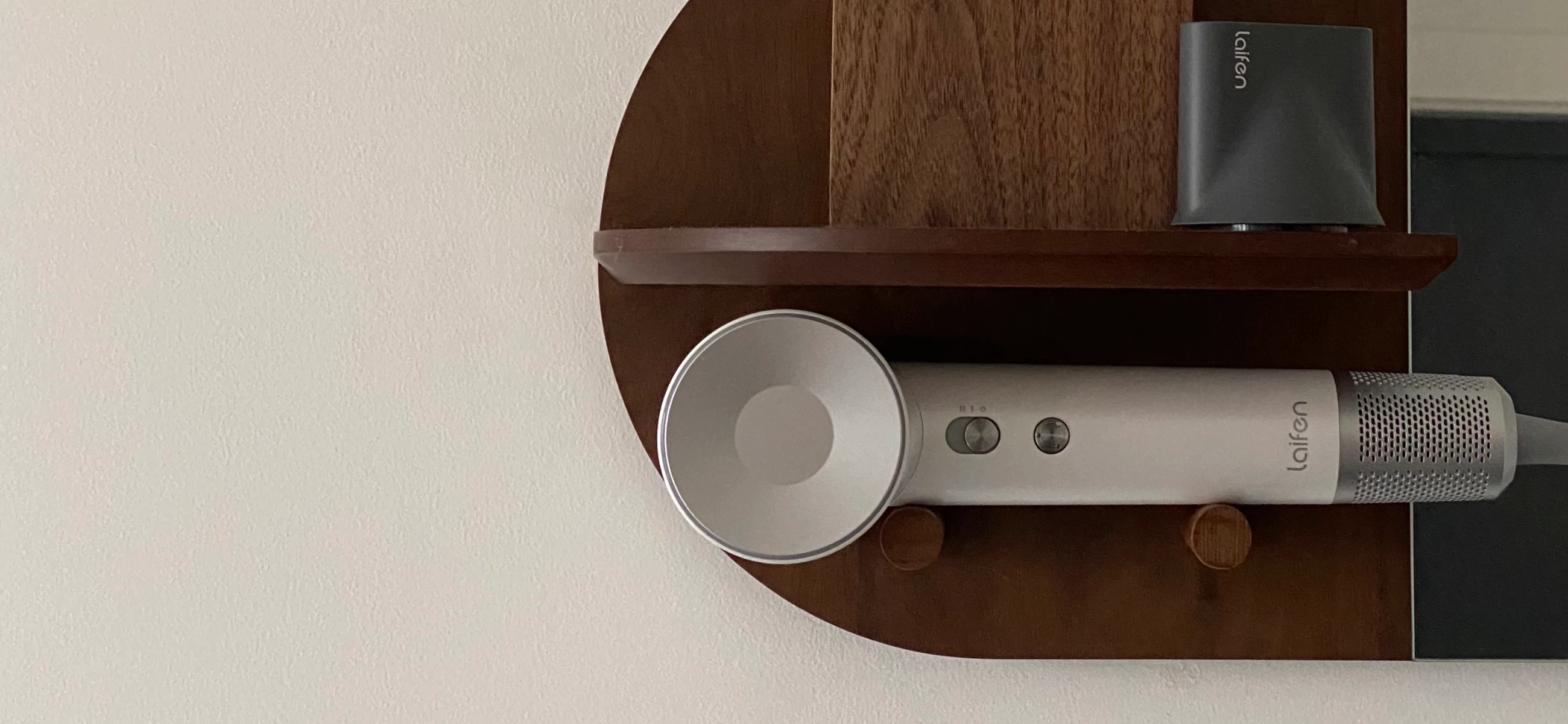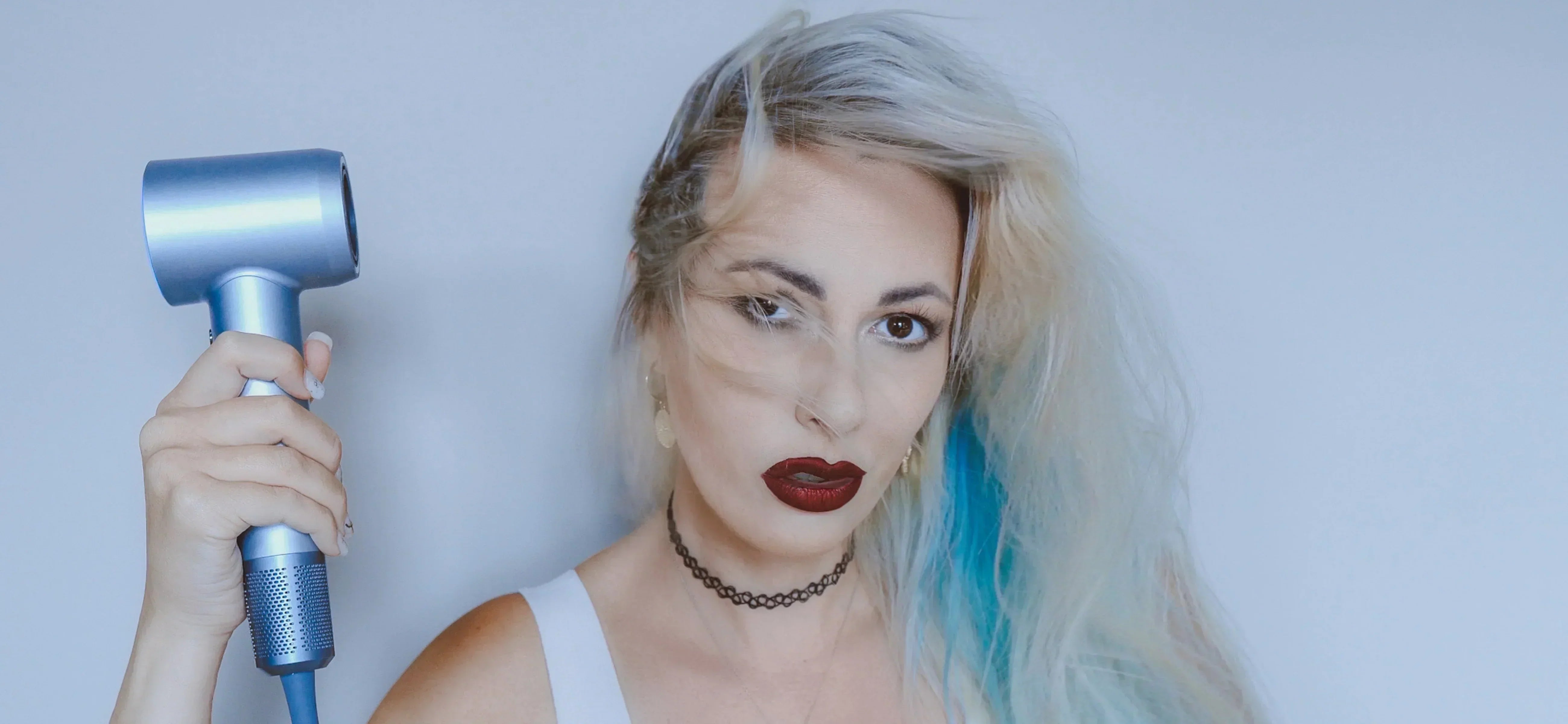
In this article
You're more than likely seen ionic hair dryers advertised, and seen brands bragging about their product's negative-ionic technology, but what does it actually mean?
It sounds impressive and technical, but what benefits does it bring to the user over traditional ceramic hair dryers?
In this article, we'll tackle these questions so you can navigate the hair dryer market with ease and confidence in knowing what you're investing in.
What is an ionic hair dryer?

An ionic hair dryer is a type of hair dryer that utilizes negative ions to break down water molecules in wet hair. Traditional hair dryers rely on heat alone, but ionic hair dryers incorporate negative ions to speed up the drying process and leave hair smoother and shinier.
"Ionic" refers to the negative ions emitted by the hair dryer during operation. These ions interact with water molecules on the hair, causing them to break down into smaller droplets. This helps hair dry faster and reduces any potential damage.
Are ionic hair dryers dangerous?
No, ionic dryers aren't dangerous when used properly. They work by emitting negative ions that break down water molecules faster, which means your hair dries quicker with less heat. This can actually be better for hair health compared to older models that rely purely on heat to get the job done.
We’ve spoken with our Laifen users about their experience with our ionic dryers, and most of them tell us the same thing: they notice smoother, less frizzy results and feel that their hair looks shinier without feeling fried.
One user even told us they stopped needing leave-in products after switching to the Laifen Swift, just because the ionic airflow made their hair feel naturally softer. Another shared how they were nervous at first, having read scary-sounding things online, but after months of daily use, they’ve had no damage.

So if you’ve been hesitating because of the word "ionic," it’s worth knowing that this is rooted in real science and user-tested by the Laifen community every day. If anything, our users say they now spend less time drying and more time enjoying how their hair looks afterward.
Differences between ionic and non-ionic hair dryers
The primary distinction between ionic and non-ionic hair dryers lies in their ion-emitting capabilities. Ionic dryers release negative ions that quickly dry hair and minimize frizz. On the other hand, non-ionic dryers do not have this feature and rely solely on heat to evaporate water from the hair. Let's see the details between them in a table.
|
Features/Type |
Ionic hair dryer |
Non-ionic hair dryer |
| Frizz control | Effectively reduces frizz by breaking down water molecules. | May not be as efficient in frizz reduction. |
| Shine enhancement | Enhances hair shine by sealing the cuticles and smoothing the hair shaft. | May not provide the same level of shine enhancement. |
| Drying time | Tends to reduce drying time. | Drying time may be slightly longer compared to ionic dryers. |
| Hair texture | Suitable for all hair types. Beneficial for coarse or frizzy hair. | Works well for normal hair but may not address specific concerns of frizz or excessive dryness. |
| Moisture retention | Helps to retain the hair's natural moisture, preventing excessive dryness. | May lead to drier hair if used frequently. |
| Cost | Often comes at a higher price point due to advanced technology. | More budget-friendly. |
| Technology | Utilizes negative ions to break down water molecules. | Relies on traditional heating elements without ionic technology. |
| Suitability for fine hair | Can be beneficial for fine hair, providing a smoother finish. | Also suitable for fine hair but may not offer the same smoothing effect. |
| Weight | Some ionic dryers may be slightly heavier due to the additional technology. | Tends to be lighter in weight. |
| Environmental impact | More energy-efficient, contributing to reduced energy consumption. | May consume slightly more energy during operation. |
Your ideal ionic hair dryers

As the best ionic blow dryer, Laifen hair dryer's ionic technology emits 200 million negative ions while drying, leaving your hair silky and smooth while fighting frizz. Coupled with the free diffuser nozzle, the SE and Swift Special can give your curls brilliant results every time.
And it doesn't stop there - the Laifen SE also comes with a Smooth nozzle, and the Swift Special goes even further by including two extra nozzles for your convenience: the Smooth nozzle and the Concentrator nozzle. Equipped with these nozzles, you will be ready to achieve any style you want, and your hair-drying routine will be a (negatively charged ionic) breeze.
Benefits of ionic hair dryers

Discover the transformative world of ionic hair dryers, where cutting-edge technology meets hairstyling excellence. These advanced devices utilize negative ions to revolutionize your drying experience. From faster drying times and reduced frizz to enhanced shine and gentler treatment for your strands, the benefits are abundant.
Step into a realm of healthier, shinier, and more effortlessly styled hair with the introduction of an ionic hair dryer into your routine. Elevate your hairstyling game with technology designed to deliver professional results in the comfort of your own home:
1. Faster drying time
Ionic hair dryers significantly reduce drying time by breaking down water molecules more efficiently. This is especially beneficial for individuals with thick or long hair who often spend extended periods drying their hair with traditional dryers.
2. Reduced frizz and static
Negative ions emitted by ionic hair dryers help neutralize positive charges in the hair, reducing frizz and static. This results in smoother, silkier hair that is easier to manage and style.
3. Improved shine and smoothness
The reduction of frizz contributes to a shinier and smoother hair texture. Ionic technology helps seal the hair cuticles, preventing moisture loss and leaving the hair looking healthier and more vibrant.
4. Gentler on hair
Ionic dryers operate at lower temperatures compared to non-ionic counterparts. This gentler approach minimizes heat damage, making ionic hair dryers a suitable choice for individuals concerned about the health of their hair.
5. Enhanced hair health
By minimizing exposure to excessive heat and reducing the need for prolonged drying, ionic hair dryers contribute to overall hair health. The smoother, hydrated strands are less prone to breakage and split ends.
To go ionic, or not to go ionic, that is the question
Ionic hair dryers have several benefits, including faster drying times, reduced frizz, improved shine, and gentler treatment of hair. Despite being more expensive than traditional dryers, their impact on hair health and styling outcomes makes them a popular choice for people looking for efficient and effective hair-drying solutions.
To maximize the benefits and longevity of your ionic hair dryer, make sure to follow safety guidelines and the manufacturer's instructions. I hope that this article has convinced you of the benefits of using ionic hair dryers and you embrace the future with your next hair dryer.
FAQs
Q1: Is using an ionic hair dryer better?
Yes, especially if you're after smooth, frizz-free results. Ionic dryers speed up drying while helping seal the cuticle, so your hair looks sleeker with less heat exposure.
Q2: What are the disadvantages of ionic blow dryers?
They can be too effective, meaning fine or thin hair might dry out quickly if you're not careful. Also, they don't give much volume, so skip them if you're chasing that bouncy, lifted look.
Q3: What hair dryer is least damaging to my hair?
You should pick up one that offers ionic and temperature control features, like the Laifen Swift Special. It dries quickly without overheating your strands.
Q4: What is the difference between an ionic and ceramic hair dryer?
Ionic dryers use negative ions to break up water for faster, smoother drying. Ceramic dryers spread heat evenly, which helps prevent hot spots. Some models even combine both for the best of both worlds.
Q5: Do ionic hair dryers cause hair loss or baldness?
Nope. When used properly, they won’t damage your scalp or hair. Hair loss is usually related to other factors.
Q6: Does an expensive hair dryer make a difference to blowout?
In most cases, yes. Higher-end dryers often come with better motors, smarter heat control, and faster drying times. which all help you get salon-level blowouts at home.
Q7: How do you use a hair dryer without harming your hair?
Keep the heat low to medium, don’t hold it too close, and always move the nozzle. A heat protectant spray is your best friend, and don’t forget to finish with a cool shot to seal the style.

